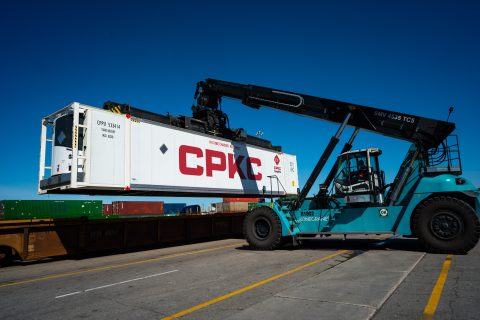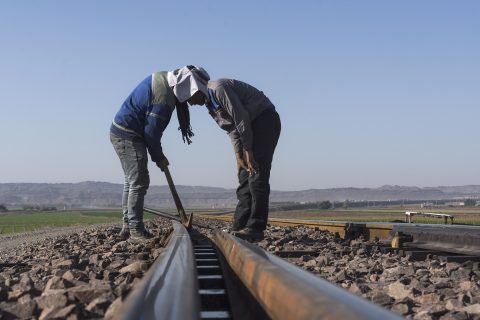Will INSTC synergy attempts produce the expected results?

A new technology and logistics union is in the making in Russia to foster closer trade and economic ties with countries around the Caspian Sea and Central Asia. The union’s primary purpose will be to boost transport via the International North-South Transport Corridor (INSTC) with the seamless participation of otherwise problematic countries like Iran. This initiative constitutes just one of Russia’s many attempts to integrate the broader region into its supply chains.
One of the main issues of the INSTC is its fragmented nature. The countries attempting to set it up have faced some challenges, mainly concerning the special regimes that some countries are subject to (sanctions on Russia-Iran), the lack of previous experience in developing shared logistical solutions, and most importantly, the lack of an integrated economic market.
Many attempts have been made to facilitate the situation, and establishing a technology and logistics union for this purpose, as announced by the Russian Deputy Economic Development Minister, Dmitry Volvach, is the latest. Will it work this time?
Work in progress
The fact that Russia has spent lots of time and resources trying to redevelop its international supply chains while maintaining control and influence over its neighbouring and partnering countries is no news. Its expansion in the Caspian Sea and Central Asian regions was quite aggressive for some time, giving the impression that INSTC could monopolise the interest in the coming years by becoming a fast-developing corridor.
However, the INSTC’s main development issue seems to be its nature. Many initiatives have been taken so far to deal with this issue. For instance, Russia and Iran connected their interbank payment systems early in 2023 to facilitate payments, investments and shared projects, including transport. Additionally, Iran signed an MoU with the Eurasian Economic Union (EAEU)–led by Russia, to streamline free trade, transport services and capital flows with its Member States.
On the other hand, Russia has initiated similar solutions with India. The two countries attempted to revitalise the Rupee-Ruble payment mechanism to make financing solutions for transport services and investments easier. Iran would also be included in the scheme. However, so far, there has been no concrete development on this end.
And, of course, there are numerous other initiatives. Some examples include the establishment of a Russian-Indian joint venture for shipbuilding and ship repair in the Caspian Sea, a joint venture between Russia-Kazakhstan-Turkmenistan, Iran joining the Shanghai Cooperation Organisation, upgrading key terminals and opening new ones along the INSTC.
What are the expectations?
Data shows that trade between Russia and Iran has grown considerably over the past few months; diverse routes have been launched, and more countries, for instance, from the Arabian Gulf, are interested in participating in the INSTC. However, the corridor as a whole has not developed according to expectations, while key members, like India, are still struggling to find their place in it.
A question to answer in this case concerns development possibilities. Are there any? And, if so, how could they unfold? One possibility could be that the INSTC develops entirely differently than expected. For example, it may be easier to utilise the route and launch more services with countries in the Arabian Gulf than with India. Another scenario could entail INSTC becoming more of a regional network between Russia and neighbouring countries. This may be why Kazakhstan keeps a sceptical stance on the corridor since it wants to avoid regionalism and isolationism from the West. Finally, the INSTC could still be in its very early stages, needing more years and experience to fulfil its potential.
The last possibility, that of a very young corridor that needs more time, is quite realistic. Indeed it is impossible to set up such a gigantic project with the coordination of so many different parties. However, this could also be the main reason for INSTC not meeting expectations. More time is needed; that is a fact. Nevertheless, one should also look at the bigger picture and the vision behind the corridor, which now seems unclear and gives the impression that it serves only regional purposes.




